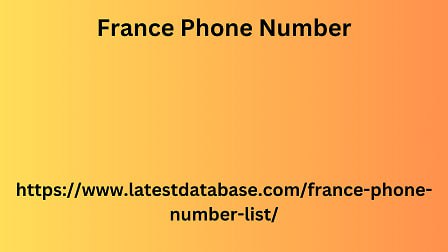Post by account_disabled on Feb 20, 2024 9:28:47 GMT
Immersive page scrolling is closely related to animation. The traditional behavior of users when scrolling a page forced most designers to think about scrolling sites from the point of view of content. For example, in what order is best to offer messages to users and what type of hierarchy should be used. These features were static, even if you added animations or videos. Animation libraries, Javascript, and native implementations (such as the linear interpolation method) have made it much easier to create smooth animations and customize the scrolling behavior of components.
Now designers can control what content to display to users and how it will look. Immersive scrolling has opened up many possibilities for both designers and users. 3D image 3D images are the most common in social networks. The image of "corporate illustration" popular in 2020-2021 will soon begin to fade, thereby opening up opportunities for something new. Designers are constantly France Phone Number looking for interesting ways to display images and are increasingly turning to photographs. And to make them brighter and more interesting, use 3D objects on websites or applications. 3D images are actively gaining popularity along with the introduction of VR/AR technologies, these trends are strongly interconnected.

Therefore, marketers should pay attention to 3D images. UX/UI trends Gradients It seems the 80s and 90s are making a comeback. In fashion, this means more spectacular clothes and exciting color solutions, and in the digital space it is embodied in the return of gradients, the use of brutalism and colorful palettes. Gradients are a big trend that has been widely embraced this year. Most likely, this trend will remain with us for several years. Amid post-pandemic exhaustion, people are looking to use colorful palettes, and this is affecting UX/UI trends. Brutalism Brutalism (as well as gradients) is a trend from the past that has returned to our screens in 2022. Brutalism - gives works a raw and unprocessed look. These were the first sites of the 90s. UX/UI trends Source:UX/UI trends Source: Along with the wave of nostalgia, we're also seeing references to past web design—more personal and less corporate.
Now designers can control what content to display to users and how it will look. Immersive scrolling has opened up many possibilities for both designers and users. 3D image 3D images are the most common in social networks. The image of "corporate illustration" popular in 2020-2021 will soon begin to fade, thereby opening up opportunities for something new. Designers are constantly France Phone Number looking for interesting ways to display images and are increasingly turning to photographs. And to make them brighter and more interesting, use 3D objects on websites or applications. 3D images are actively gaining popularity along with the introduction of VR/AR technologies, these trends are strongly interconnected.

Therefore, marketers should pay attention to 3D images. UX/UI trends Gradients It seems the 80s and 90s are making a comeback. In fashion, this means more spectacular clothes and exciting color solutions, and in the digital space it is embodied in the return of gradients, the use of brutalism and colorful palettes. Gradients are a big trend that has been widely embraced this year. Most likely, this trend will remain with us for several years. Amid post-pandemic exhaustion, people are looking to use colorful palettes, and this is affecting UX/UI trends. Brutalism Brutalism (as well as gradients) is a trend from the past that has returned to our screens in 2022. Brutalism - gives works a raw and unprocessed look. These were the first sites of the 90s. UX/UI trends Source:UX/UI trends Source: Along with the wave of nostalgia, we're also seeing references to past web design—more personal and less corporate.
